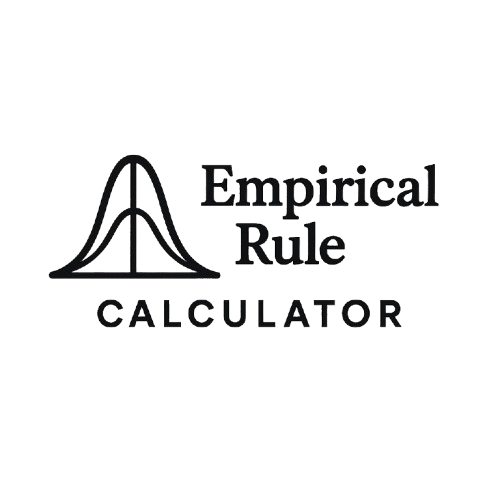Z-Score to Percentile Converter
Convert Z-scores to percentiles with interactive normal distribution visualization
Enter any Z-score value between -4 and 4
Results
Z-Score
Percentile
Area Under Curve
Above This Score
Interpretation:
Normal Distribution Visualization
Standard Normal Distribution
Mean = 0, Standard Deviation = 1
Shaded Area
Represents percentile value
Z-Score Position
Vertical line on distribution
Common Z-Score Reference Table
| Z-Score | Percentile | Interpretation |
|---|
The z-score to percentile converter is a simple tool that transforms a z-score into a percentile within a normal distribution, helping you understand where a data point ranks. Whether you’re a student analyzing test scores, an analyst evaluating data, or a researcher interpreting results, this tool makes it easy to convert z score to percentile instantly. By entering a z-score, you get the percentage of data below that value, based on the normal distribution percentile calculator. This guide explains z-scores, percentiles, and how to use the tool effectively. Want to explore related calculations? Try our main statistics calculator for broader insights.
What Is a Z-Score?
A z-score measures how many standard deviations a data point is from the mean in a normal distribution. It’s calculated as:
[ Z = \frac{x – \mu}{\sigma} ]
Where:
x is the data point (e.g., a test score).
μ is the mean (average).
σ is the standard deviation, showing data spread.
For example:
A z-score of 1 means the data point is one standard deviation above the mean, roughly the 84th percentile.
A z-score of 0 is at the mean, the 50th percentile.
Z-scores are key in statistics because they standardize data, letting you compare values across different datasets. To see how z-scores fit into the 68-95-99.7 rule, check out our percentile tool .
What Does Percentile Mean?
A percentile indicates the percentage of data points below a specific value in a distribution. For instance, if a test score is in the 75th percentile, it means 75% of scores are lower. In a normal distribution, percentiles relate to the cumulative probability under the z-score bell curve, showing a value’s position relative to others.
Knowing the percentile from z-score is useful for:
Ranking students or employees (e.g., top 10%).
Assessing performance in standardized tests.
Analyzing data in fields like finance or health.
Percentiles help you understand data context, and tools like our rank calculator can provide deeper insights.
How to Use the Z-Score to Percentile Converter
Using the z-score to percentile converter is straightforward:
Input the Z-Score: Enter the z-score (e.g., 1.5). If you have a raw score, convert it to a z-score using the mean and standard deviation first.
Generate the Percentile: The tool calculates the percentile based on the standard normal distribution. For example, a z-score of 1.5 corresponds to roughly the 93rd percentile.
View Optional Outputs: Some converters show the cumulative probability (the area under the curve to the left of the z-score) or a visual graph.
Interpret Results: A percentile of 93 means 93% of data falls below that z-score.
Example: A z-score of 2 is about the 97.7th percentile, meaning the value is higher than 97.7% of the data. To visualize this, try our distribution visualizer.

When to Use This Tool
The z-score to percentile converter is ideal for:
Normal Distributions: When data forms a bell-shaped curve, like test scores or biological measurements.
Known Z-Scores: If you’ve calculated a z-score from raw data (e.g., a score’s distance from the mean).
Applications: Academic grading, statistical reports, or analytics in fields like education or finance.
It’s perfect for quickly finding what percentile is my z-score without manual calculations. For a broader understanding of percentiles, see percentile concepts.
Z-Score vs. Percentile – What’s the Difference?
Z-Score: Measures how far a data point is from the mean in standard deviations. A z-score of 1 is one standard deviation above the mean.
Percentile: Shows the percentage of data below a value. A z-score of 1 is the 84th percentile, meaning 84% of data is below it.
Example 1: A test score with a z-score of 0 (at the mean) is the 50th percentile—half the scores are below it. Example 2: A z-score of -1 (one standard deviation below the mean) is the 16th percentile, as 16% of data is below it.
This distinction is key in statistics, and tools like the empirical rule z-score conversion help clarify it. For practical examples, explore real-world percentile uses .
FAQs
A z-score of approximately 1.645 corresponds to the 95th percentile in a normal distribution.
Yes, negative z-scores indicate values below the mean. For example, a z-score of -1 is one standard deviation below, around the 16th percentile.
A z-score of about 2.33 corresponds to the 99th percentile, meaning the top 1% of data.
No, the z-score to percentile converter is designed for normal distributions. Skewed data requires different methods.
The 68-95-99.7 rule z-score helps estimate percentiles (e.g., z = 1 is 84th percentile) for quick approximations in normal distributions.
Converting z-scores to percentiles shows a value’s rank in a dataset, useful for grading, rankings, or data analysis.
Conclusion
The z-score to percentile converter simplifies the process of finding percentile from z-score in a normal distribution, making it easy to rank data points like test scores or measurements. By transforming z-scores into percentiles, this tool helps students, analysts, and researchers understand data positioning without complex math. Whether you’re evaluating academic performance or analyzing data trends, this converter offers clear insights. Try our main statistics calculator to explore more, or use related tools like the percentile tool , rank calculator , distribution visualizer , and learn about percentile concepts or real-world percentile uses for a complete statistical toolkit.
Empirical Rule Graph Generator
Visualize the 68-95-99.7 Rule with a bell curve showing standard deviation intervals. Great for quick insights and presentations.
Try CalculatorBell Curve Generator
Create customizable bell curve plots for any normal distribution. Perfect for data analysis and visual reports.
Standard Deviation Shading Calculator
Shade areas under the curve based on standard deviation. Instantly see data coverage between values.
Try CalculatorZ-Score to Graph Plotter
Plot Z-scores on a bell curve and see where your value lies. Understand percentiles and probabilities at a glance.
Try Calculator
